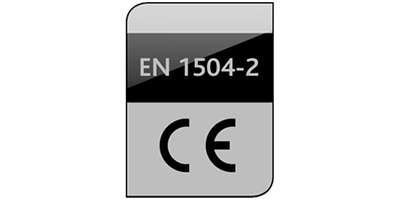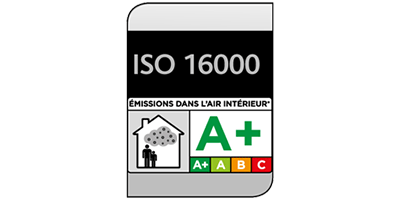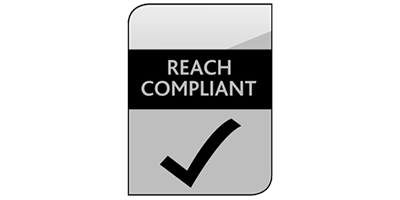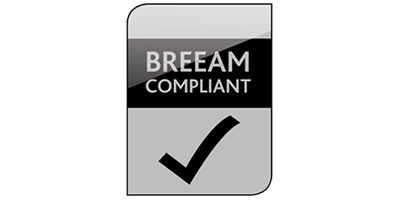To bring you the best floor paint, we put it through its paces, because we know you’ll do the same
We’re passionate about paint, which means we do everything we can to bring you products of the highest quality and durability. To do this, we’ve put our range through extensive testing to prove that when you buy from Watco, you’re buying the best.
Our coatings carry CE Mark EN1504-2 making it the mostly highly qualified paint range on the market. Not only that, our coatings have been tested against other leading brands for adhesion, hardness, scratch resistance, abrasion resistance and slip resistance. The test results speak for themselves and prove that Watco paints are the toughest floor coatings that will last even longer than you’d expect.
BS7976-2
The test: To measure slip resistance a Coefficient of Friction (CoF) test is used.
How it works: A pendulum slip test (or PTV) is the UK’s preferr...
BS7976-2
The test: To measure slip resistance a Coefficient of Friction (CoF) test is used.
How it works: A pendulum slip test (or PTV) is the UK’s preferred test method for measuring floor slipperiness in both wet and dry areas. The pendulum test imitates the way a heel makes contact with the floor. The swinging pendulum glides over the floor in a controlled manner giving a measurable Pendulum Test Value, or PTV.
The results: A PTV tested with a wet result value of 0-24 indicates a high risk of slip. Between 25-35 is a moderate risk and anything above 36 is classed as low risk. We’re pleased to say all our anti slip coatings have a PTV value above 36. The products with the best PTV rating are Safety Grip, Heavy Duty Anti Slip Traffic Paint and ArmourGrip which all have a fantastic wet PTV above 70. Results for all products can be viewed here.
ISO 1519
The test: A Mandrel Flex Tester is used to determine elasticity, adhesion and elongation of paint.
How it works: A thin metal sheet is painted and...
ISO 1519
The test: A Mandrel Flex Tester is used to determine elasticity, adhesion and elongation of paint.
How it works: A thin metal sheet is painted and bent 180 degrees around a piece of equipment called a Mandrel, causing it to stretch. The sheet is bent over a range of diameters until it reaches a specific diameter where it starts to crack, delaminate or show some sign of physical defect. The diameter it cracks at gives the flexibility result. The higher the diameter it cracks at, the less flexible the coating is.
The results: The coatings which demonstrated the highest flexibility passed the 2mm test which is the best result you can get. Our top coating for flexibility is Flexicoat.
ISO 6272
The test: The impact resistance test shows how much impact is needed before the coating shows signs of cracking or disbonding altogether.
How it work...
ISO 6272
The test: The impact resistance test shows how much impact is needed before the coating shows signs of cracking or disbonding altogether.
How it works: A 2kg weight on a rail is dropped from a pre-determined height, onto a coated metal sheet. If the coating shows signs of impact but hasn’t actually cracked, it’s classed as a pass, but if it cracks it’s a fail, therefore the test has to be carried out again varying the weight and height, until it gets to a point where the paint film is still intact. So, how impact resistant it is, is determined by the calculation between the height from which the weight has been dropped, and the size of the weight itself.
The results: The results are expressed in Newton meters (NM), and the higher the Newton meters, the better the impact resistance. To pass the CE marking threshold, coatings must have a minimum of 4 Newton meters which equates to a Class 1 rating. As a guide to how impact resistant our coatings are, Concrete Floor Paint Best Ever Formula, which is a single pack floor paint, not a two pack, has in excess of 20 Newton meters and that equates to Class 3 which is excellent and well exceeds the pass mark.
ISO 2409
The test: The Cross Cut method determines the resistance of coatings to separation.
How it works: On a test area, a grid incision is made wi...
ISO 2409
The test: The Cross Cut method determines the resistance of coatings to separation.
How it works: On a test area, a grid incision is made with a cutter (or metal blade) all the way down to the substrate. An adhesive tape is then placed over the area and removed rigorously. The adhesion is then classified based on the condition of the area, i.e. if the paint has flaked partially along the edges or completely detached.
The results: If the back of the tape is completely clean, the score given would be Class 0. Class 0 is the best score through to Class 5 which indicates the lowest level of adhesion. Good adhesion to the substrate is one of the most important aspects of a floor coating. Watco coatings tested to Class 1 or Class 0.
EN 1542
The test: The Adhesion Pull Off test measures how much force is needed to pull a coating off the floor. Adhesion is expressed in MegaPascals (MPa) or Newton millimetres squared (Nmm2)...
EN 1542
The test: The Adhesion Pull Off test measures how much force is needed to pull a coating off the floor. Adhesion is expressed in MegaPascals (MPa) or Newton millimetres squared (Nmm2).
How it works: A loading fixture, otherwise known as a dolly, is glued onto the coating. Pressure is then put onto the dolly and gradually increased until it pulls the coating off the floor. The force needed to remove the dolly is measured and given a numerical value.
The results: To pass CE marking requirements the results must exceed 2 Megapascals.
ISO 5470-1
The test: To find out just how abrasion resistant or hard wearing our coatings are, we carry out a Taber Abrasion test. This test replicates years of actual use in just a few hours...
ISO 5470-1
The test: To find out just how abrasion resistant or hard wearing our coatings are, we carry out a Taber Abrasion test. This test replicates years of actual use in just a few hours.
How it works: A metal plate is coated and mounted on a rotating turntable and subjected to the wearing action of two abrasive wheels. The plate is then weighed to see how much coating has been worn by the two wheels and the result is expressed in milligrams. The lower the milligram value, the more abrasion resistant the coating is.
The results: To obtain a CE marking, the results have to be less than 3000 milligrams. Epoxy Gloss Coat Best, Ever Formula, lost only 57 milligrams, and Concrete Floor Paint, Best Ever Formula, lost only 127; pretty impressive bearing in mind the pass mark is up to a loss of 3000 milligrams. The test compared Watco Epoxy Gloss Coat and Watco Concrete Floor Paint with leading competitor brands and showed the Watco coatings to be up to twice as hard wearing.
ISO 45862
The test: Scratch resistance is measured using a Sclerometer and the resistance is measured in Newtons. The Sclerometer is used to assess a coating’s resistance to permanent damage....
ISO 45862
The test: Scratch resistance is measured using a Sclerometer and the resistance is measured in Newtons. The Sclerometer is used to assess a coating’s resistance to permanent damage.
How it works: The test is performed by moving the hardened tip over the surface with a predetermined force. The coating is then visually examined for damage, the harder the coating, the greater the force required to scratch it.
The results: The results are expressed in Newtons as it’s a measurement of force. The higher the result the more scratch resistant the coating is. 1N is the lowest resistance, 20N is the highest. Scratch resistance is important since scratches dull a paint surface and make it difficult to clean.
EN 1062-3
The test: The Water Permeability/Capillary Absorption test to EN1062-3, indicates how effectively a coating will prevent ingress of water into the substrate, or how well it will wat...
EN 1062-3
The test: The Water Permeability/Capillary Absorption test to EN1062-3, indicates how effectively a coating will prevent ingress of water into the substrate, or how well it will waterproof and protect the substrate.
How it works: 3 bricks are completely sealed with a coating on all sides, except one, then immersed in water for 24 hours. The weight of the bricks is recorded before and after the immersion, to see how much water has been absorbed.
The difference in weight, and the surface area of the coating of all three bricks, are then calculated to see how much water has been absorbed in 24hrs.
The results: The result is the average taken from all three bricks. To pass the CE marking, there has to be less than 0.1 kilograms of water absorption, per metre squared. Look for the test results on the product data sheet for areas where damp proofing are important.
EN 17/3
The test: The aim of the Food Taint Test is to determine whether a coating has the potential to taint food after it has cured. This test is crucial in food preparation areas where hyg...
EN 17/3
The test: The aim of the Food Taint Test is to determine whether a coating has the potential to taint food after it has cured. This test is crucial in food preparation areas where hygiene is important on all surfaces.
How it works: A specialist testing centre is used for food taint testing. Trained technicians are used to taste chocolate which has been in contact with a coating against similar chocolate which has not.
A glass tile, which has been cut to a specific size, is coated and left to cure for 7 days. It then goes into a sealed unit alongside the chocolate; the coating and the chocolate do not come into contact with each other. The point of the test is to see if any chemical or fume given off by the coating is transferred atmospherically to the chocolate, thus contaminating it and changing how it tastes.
At the same time an identical test is carried out using chocolate from the same pack, but this time it goes into a sealed unit without the coated glass tile. Both lots of chocolate are left in the sealed unit for 24 hours before given to 30 specialist ‘sensory tasters’. Not a bad job really!
The results: If there is any hint of contamination, it’s automatically a fail, but if the ‘tasters’ can’t detect any change in the chocolate whatsoever, then it’s a pass.
DIN 51130
The test: The Ramp test is also used to determine the slip resistance of a coating.
How it works: For DIN 51130 the subject wears heavily cleated...
DIN 51130
The test: The Ramp test is also used to determine the slip resistance of a coating.
How it works: For DIN 51130 the subject wears heavily cleated safety boots with motor oil contamination underfoot and walks on the ramp, which is also contaminated. The ramp is then inclined until the subject slips. This angle is recorded to give an R rating, the greater the angle, the greater the slip resistance.
The results: An ‘R’ rating between 9 and 13 indicates the level of slip resistance, R13 being the most slip resistant. This test is primarily referred to by our German customers, the Pendulum Slip Test referred to above is most common in the UK.
The test: The level of gloss relates to one’s perception of the finish, texture and whether it’s perceived to be shiny or lustrous. One of the ways it can be measured is an optical glossmeter.
&n...
The test: The level of gloss relates to one’s perception of the finish, texture and whether it’s perceived to be shiny or lustrous. One of the ways it can be measured is an optical glossmeter.
How it works: A constant intensity light beam is directed onto the surface at a fixed angle which then monitors the amount of reflecting light at the same angle. A glossy surface will reflect more or all of the light beam, whereas a matt or uneven surface, (such as an anti slip coating), will scatter the light particles and reduce the gloss level. As an example, Epoxy Gloss Coat has a gloss value of 99, whereas Concrete Floor Paint Matt has a value of 4.
The results: Matt 0-10%, Low Sheen 10-25%, Eggshell 26-40%, Semi-Gloss 41-69%, Gloss 70-85%, High Gloss +85%.
Our glossiest coatings include Epoxy Gloss Coat, Epoxicote High build and Fastcoat.
The test: The ‘Pencil Test’ determines the hardness of the coating.
How it works: A pencil is pushed across the coating at a specified angle and constant force. The...
The test: The ‘Pencil Test’ determines the hardness of the coating.
How it works: A pencil is pushed across the coating at a specified angle and constant force. The Pencil hardness is then increased from HB (least hard) to 9H (hardest) until the coating is scratched. Typically, the harder the coating, the better the cure and its overall performance.
The results: A 9H reading is the measure of a hardest coating, HB is the softest. A good measurement of hardness indicates good durability and resistance to scratching.
The test: Our coatings have been tested to see just how resistant they are when subjected to chemical attack.
How it works: The coating is totally submerged in the chemic...
The test: Our coatings have been tested to see just how resistant they are when subjected to chemical attack.
How it works: The coating is totally submerged in the chemical for 28 days. After immersion, the strength of the coating is measured, using the Shore D Hardness Test. We have tested to Class 2, which is immersion in the chemical for 28 days without pressure. The Shore D Hardness Test works by inserting a small spike into the coating. The effort needed to push the spike into the coating is measured, and this determines how hard or soft the coating is after the chemical attack.
The results: The criteria for CE Marking EN 13529, (resistance to severe chemical attack), states that the coating must not decrease in its Shore D value of less than 50%. Our coatings have been tested using a range of more commonly used chemicals and we have subsequently rated their overall chemical resistance as Excellent, Very Good, Good and Limited.
Watco Chemi- Coat has been designed to offer excellent chemical resistance, with Chemi-Coat Acid Strength resisting 98% concentration of sulphuric acid.
BS8493:2008
The test: Our coatings have been tested to give an accurate measurement of the amount of light that is reflected from the surface.
How it works:
BS8493:2008
The test: Our coatings have been tested to give an accurate measurement of the amount of light that is reflected from the surface.
How it works: LRV stands for light reflective value and is measured in accordance with BS8493:2008. The LRV is measured using a Datacolour Spectro 700 Spectrophotometer. This machine captures the true spectral fingerprint of any colour, giving an accurate measurement of the amount of light that is reflected from the surface.
The results: An LRV runs on a scale of 0% - 100%. A perfect black would have a LRV of 0%, whilst a perfect white would have an LRV of 100% (neither of these currently exist!). If the colour has a LRV value of below 50%, you know the colour will be absorbing more light than it will be reflecting back into the room. The opposite applies for colours with an LRV value above 50%.

EN 1504-2
This mark indicates that a coating has passed all the test required to carry a CE mark.

ISO 16000
The ‘Loi Grenelle’ measurement of the effect of a product’s VOC level within a building. A+ is the top safety rating.

REACH Compliant
Addresses the production and use of chemical substances, and their potential impacts on human health and the environment.

BREEAM Compliant for refurbishment projects
A sustainability assessment method for master planning projects, infrastructure and buildings.